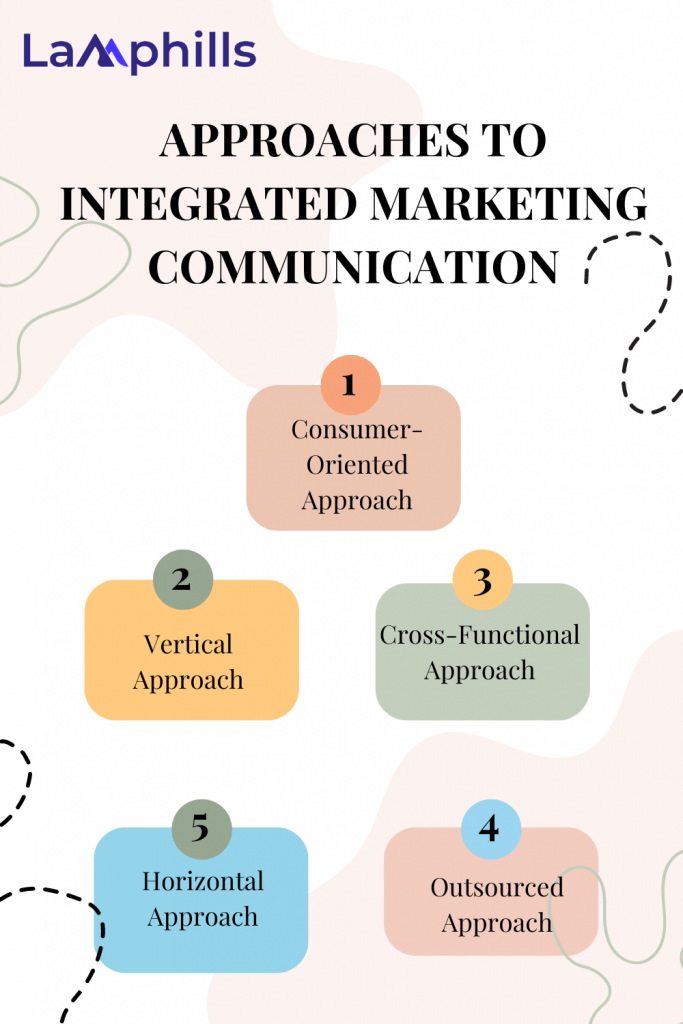Are you finding it hard to keep your business’s messages consistent across different platforms? If yes, Integrated Communications Marketing might be just what you need. But what is it, and how can it help your business?
In simple terms, integrated marketing communications is a marketing strategy that assists brands in bringing together all of their marketing initiatives. But that’s just a fragment of the full story.
With deep experience in writing content from copies to content in the marketing and communications industry, I understand how aligning your messaging can transform a business. So, in this guide, I’ll share everything you need to know about Integrated Communications Marketing, drawing from industry best practices and proven strategies.
Key Points
- In an integrated campaign, advertising can increase product awareness and create sales leads
- To convert those leads into clients, employ telemarketing to sell directly or schedule meetings for the sales staff
- Working consistently across many media can help you raise awareness of your company’s identity, brands, deals, catchphrases, or other key messaging
- Collecting and analyzing data may also determine which marketing channels are effective
- Before developing any ideas or approaches, you should know the available resources
What is Integrated Marketing Communications (IMC)?
Integrated marketing communications (IMC) is both a theory and a set of business practices that allow for consistent messaging across channels and create a cohesive brand experience for consumers. This fundamental marketing notion applies to advertising and all aspects of a company’s communication. Integrated marketing aims to provide customers a consistent and favorable experience whenever they connect with a company.
Approaches to Integrated Marketing Communication

Numerous interpretations exist of what IMC entails and how it might be implemented. This list of common approaches should give you a sense of how they can be applied.
#1. Consumer-Oriented Approach
This strategy begins by attempting to comprehend consumers. Before generating content or messaging, the marketing team does research. They identify the target audience and use internal data or other methods to determine what customers want and value. The findings influence the design of an integrated marketing communications plan.
#2. Vertical Approach
This top-down strategy is less customer-focused. A company’s mission and message may be well-defined. Starting in the C-suite, leaders can instill excitement in employees about new initiatives or goods, which they can then share with others or direct the implementation of an IMC plan.
#3. Cross-Functional Approach
An increasingly prevalent method in the digital age is planning several touchpoints with consumers, both online and in person, to provide an interactive and engaging customer service experience.
#4. Outsourced Approach
One approach is to employ an external team to conduct research, analytics, and content creation. They may assess your company’s goals, performance, and what it will take to integrate marketing communications. After that, they may put the approach into action.
#5. Horizontal Approach
A horizontal approach is a collection of departments collaborating on a single initiative. Management can either promote an initiative across divisions, such as sales, public relations, and corporate communications or form a team and assign a project leader. The process can be organized in a workflow, from planning to implementation to evaluation.
Checklist for Accessing Integrated Marketing Communications.pdf
Creating a Successful Integrated Marketing Strategy
Here are a couple of things you should know when creating an integrated marketing strategy.
Data gathering and consumer behavior analysis should guide your integrated marketing communications strategy. You can use the data acquired to tweak your marketing strategy and improve its performance. Moreover, collecting and analyzing data can determine which marketing channels are effective. It lets you decide where to spend additional dollars to strengthen your message.
Furthermore, when establishing your marketing strategy, remember the stage of the buying process you want to impact. Studying your internal and external contexts may also provide additional insights.
It will reveal your skills and weaknesses so that you can improve them. Before developing any ideas or approaches, you should know the available resources. Your company’s marketing budget can be based on a percentage of sales or a percentage of profit.
In addition, your budget will be determined by your company’s size and financial capacity. You may assess the success of your techniques by examining how effectively they work. Integrated marketing communication is circular. You can use this information to evaluate whether your plan needs to be improved in the next iteration.
If you complete all these stages, I can tell you that your organization’s integrated marketing communication will be clearly described. You can also better manage your business’s marketing programs. You can effortlessly connect with your target audience and provide the greatest possible experience.
IMC Case Study
#1. Microsoft Corporation
Microsoft Corporation is an American technology company that develops, manufactures, licenses, distributes, supports, and offers support for personal computers, consumer electronics, and associated services. The company aims to “provide the power to every person and every administration on the globe to accomplish more.” Print and media play an important role in Microsoft’s marketing strategy. Microsoft spends up to $1.7 billion on print and media alone. Microsoft has consistently taken on AI Program projects, giving AI a significant place in its product lineup. Also, Microsoft collaborated with Carlsberg to use AI to accelerate the development of new beer flavours and sell its AI solutions. The corporation has marketed this effort through various channels and an integrated marketing approach.
#2. Coca-Cola
With banners, print, and television advertising, Coca-Cola’s integrated components took a mass media approach. The plan included a marketing mix that included commercials, promotional events, and interactive and engaging online media marketing. Coca-Cola is one of the most successful advertisers in marketing history. Throughout the company’s 129-year history, various advertising campaigns have profoundly impacted society and the culture. The key integrated marketing communication tactics the Coca-Cola Company uses are advertising, public affairs, sponsorships, and promotional events. One of the most important components of the company’s success is integrating numerous tools and their real-life application.
#3. Wells Fargo
Wells Fargo, a financial services company, is the world’s third-largest bank. Despite being plagued by fraud, the company used integrated marketing and rebranding campaigns to reclaim the trust of its stakeholders and customers. Advertisements highlight the implementation of Control Tower, a feature that provides consumers with safe, centralized access to their banking information. Wells Fargo effectively used integrated marketing communication channels to build a well-rounded campaign that was well-received by its target demographic.
Benefits of Integrated Marketing Communications
Integrated marketing communications benefit multiple audiences. They help your customers trust your brand and improve alignment among your organization’s stakeholders.
Consider how it may benefit your organization before investing in IMC, as with any other marketing technique.
#1. Very Fascinating
First of all, it works. You only saw some of the outcomes given above concerning the campaign examples. 3 million social media impressions are a rare occurrence for brands. To achieve such achievement, every step must be strategically planned. IMCs are designed from top to bottom.
#2. Cost-Efficient
These campaigns also let users or potential buyers handle some of the marketing for you. I remembered a story of interested buyers waiting for Snapchat Spectacles to use their social media identities to raise awareness. While the campaign may require an expenditure, the surrounding publicity is free.
These campaigns cut expenses by creating multi-purpose materials. Videos, pictures, copy, and other content can be transferred from one medium to another.
#3. Improved Brand Recall
Integrated marketing initiatives are effective because they appear everywhere. The Snickers commercial appears between Friends episodes and during the Super Bowl, the most prestigious Super Bowl ever. Then, you see the commercial again, but with a different celebrity.
Integrated Marketing Communication Difficulties
As with everything, it is critical to examine any potential risks. Going beyond the rewards and understanding what trials may lie ahead helped me become better equipped to face any challenges.
#1. Creative Limitations and Concept Constraints
When deciding to carry out an IMC, assess these questions: How much attention and time will this endeavor require? As I previously said, an integrated campaign aims to deliver a consistent message so that consumers can readily comprehend your perspective.
In the meantime, any ideas generated by your creative team will have to be put on hold.
All hands must be on deck to serve the same aim, as your campaigns cannot compete for attention. This can sometimes leave your creative teams feeling restricted or disregarded.
It can also be difficult to reconcile opposing creative viewpoints and establish a structure of accountability and ownership, particularly if the creative team is uninspired by the campaign.
Another aspect to consider is using technology and customer data across many teams. Sometimes, getting past the protocols and permissions of several departments detracts from the goal of operating an integrated marketing campaign to engage and persuade customers with ideas.
#2. The Glue Behind the Brand Value
An integrated marketing strategy allows you to demonstrate your innovation to customers while delivering a distinct message across numerous platforms. When done correctly, it can result in your brand name appearing in thousands of text messages, emails, or weekend brunch conversations.
The impacts of this attention and awareness are tough to quantify because so much of the response to an integrated marketing campaign is subconscious. Okay, there’s this scenario where my little sister was asked to go grocery shopping, and the next thing was coming home with some bucket of Ice cream and other beverages. And that’s someone who went grocery shopping buying a bar in the grocery store checkout line because she saw a fantastic integrated marketing effort or because she’s hungry. A chocolate bar grabbed her eye at the perfect time.
#3. Cross-functional assistance and Resource Buy-in
Consider the several departments engaged in an integrated marketing effort. Before you can integrate outside, you must incorporate within. This includes creating and collaborating with sales, marketing departments, public relations, and other teams involved in the campaign implementation process.
One issue of IMC is that professionals are sometimes unwilling to cede their control or share the team’s budget. IMC campaigns necessitate team cooperation and resource sharing.
Consider the objectives that may arise from other departments and how you plan to meet them. Remember that you all share a common aim.
What is integrated in communication?
The glue that keeps brand consistency across all platforms and ties efficient communication to organizational goals is an integrated communication strategy. To engage the target audiences and advance the business, it considers who they are, where to communicate, and how to do so.
What is an example of integrated communication?
The “AnyWare” promotion was launched by pizza restaurant giant Domino’s to facilitate more simple meal ordering. Customers can use Ford Sync, smart watches, tweets, and smart TVs to place orders with Domino’s AnyWare.
What is the goal of integrated communication?
Integrated marketing communications convey a message to customers differently when they engage with a business.
What does integrated comms mean?
Integrated strategic communications aims to coordinate the many facets of communication, including public relations, digital marketing, and traditional advertising, to deliver clear and consistent messages to important stakeholders.
What are the benefits of an integrated communication strategy?
An integrated communication strategy can improve an organization’s communication efforts by allowing for focused messaging, brand consistency, many platforms, effective crisis management, and results measurement.
Conclusion
Integrated marketing communications is a communication planning technique that can help your small business achieve greater campaign results while lowering marketing costs. Rather than depending on separate marketing activities, such as a print ad campaign, an integrated approach maximizes using the various channels accessible to modern organizations. According to the American Association of Advertising Agencies, integrating advertising, direct mail, social media, telemarketing, and sales promotion ensures clarity, consistency, and maximum communication impact.





